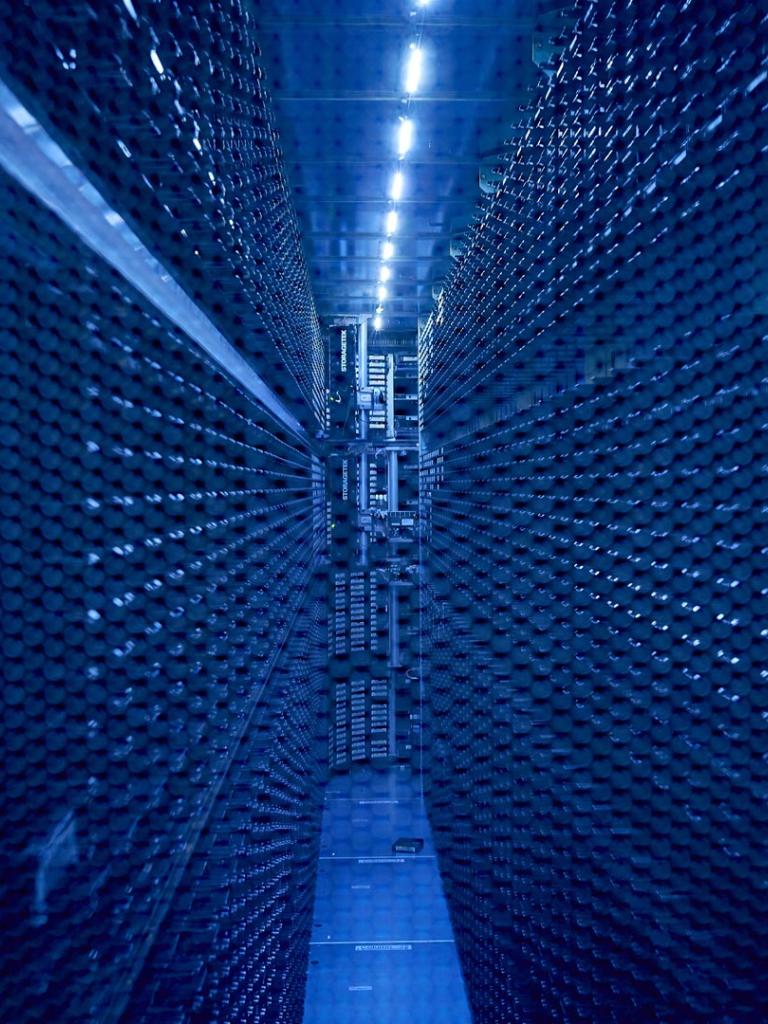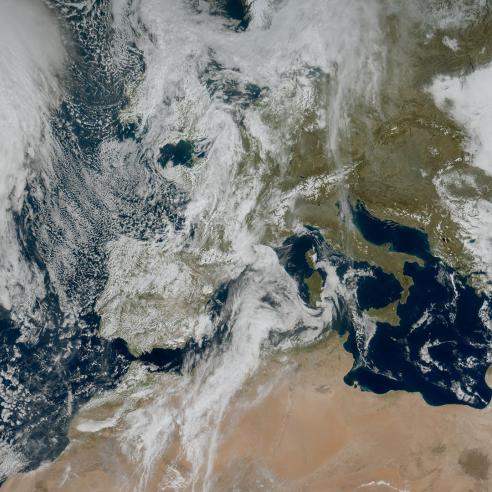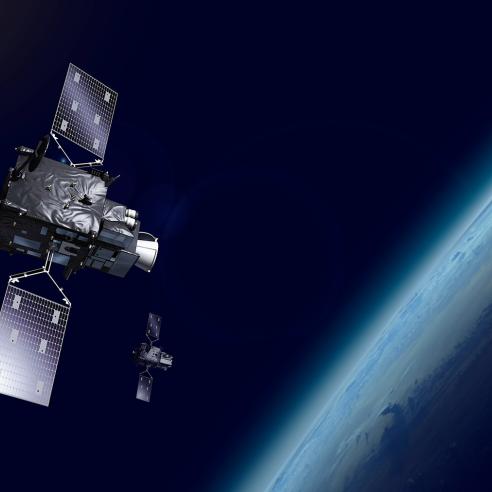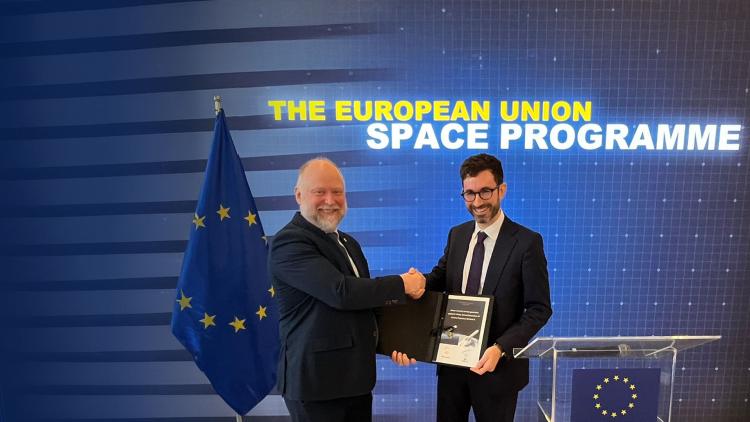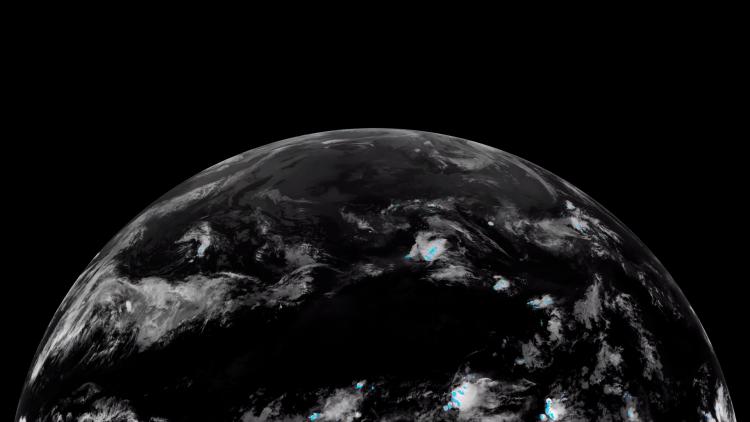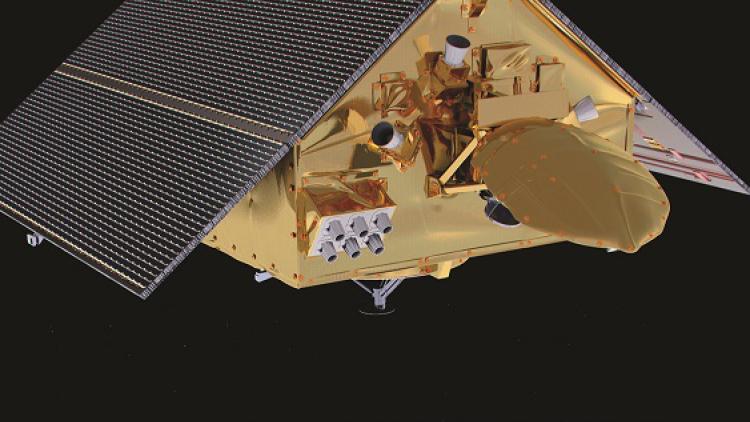21 August 2025
08 May 2023
Meteosat Second Generation
Data from MSG satellites are downlinked via the EUMETSAT MSG Primary Ground Station located in Fucino (Italy) and in Cheia (Romania). The primary Ground station is composed of 5 dual frequency antennas of 13 meters dish diameter supporting Tracking, Telecommanding, Telemetry and radiometric measurements (TT&C) of the spacecraft as well as Mission Data reception. After the acquisition, data are transmitted to the EUMETSAT control centre (MCC) for geostationary missions, in Darmstadt, Germany, via a dedicated Wide Area Networks. There, after being processed, data are archived and distributed to our users.
In addition to the support to MSG, as of 2025, three of these antennas also support Tracking, Telecommanding and Telemetry of Meteosat Third Generation (MTG) satellites.

(Fucino, Italy)

(Cheia, Romania)
Meteosat Third Generation
MTG satellites are monitored and controlled from Fucino and Cheia. Tracking, Telecommanding, Telemetry and radiometric measurements (TT&C) of the spacecraft are provided by two 9 meters dish diameter antennas located in Fucino (Italy) and Cheia (Romania) which are fully dedicated to MTG spacecraft. The number of supporting antennas, of different sizes, will vary during the lifetime of the mission based on the number of operated spacecrafts.
Mission Data Acquisition (MDA) from the MTG satellites’ instruments is performed from two sites, in Lario (Italy) and Leuk (Switzerland). The antennas at these sites are remotely controlled and monitored from the EUMETSAT control centre. After acquisition and decryption data are routed to the EUMETSAT control centre (MCC) for geostationary missions, in Darmstadt, via dedicated Wide Area Networks where after being processed, data are archived and distributed to EUMETSAT users.

(Fucino, Italy)

(Cheia, Romania)

(Lario, Italy)

(Leuk, Switzerland)
EUMETSAT Polar System
Data from the Metop satellites are downlinked and received at each orbit via the EUMETSAT EPS Primary Ground Station located on Svalbard (Norway). The primary Ground station is composed of triple frequency antennas of 10 meters dish diameter supporting Tracking, Telecommanding, Telemetry and radiometric measurements of the spacecraft (TT&C) as well as Mission Data. After data acquisition, mission data are transmitted to the EUMETSAT control centre (MCC) for Low Earth Orbit (LEO) missions, in Darmstadt, Germany, via a dedicated Wide Area Networks where after being processed, mission data are archived and distributed to EUMETSAT users.
In addition to the support to EPS, these two antennas will also support the Tracking, Telecommanding and Telemetry of EPS Second Generation (EPS-SG) satellites starting from 2025.
Mission data from the Metop Spacecraft are also acquired at the Southern hemisphere by Ground Stations in McMurdo (Antarctica) thanks to the Initial Joint Polar System (IJPS) agreement with the United States’ National Oceanic and Atmospheric Administration’s (NOAA). Mission data acquired from McMurdo are transferred to Darmstadt via the Antarctic data acquisition network service, which has greatly improved the average timeliness of products sent to the users.


Copernicus Sentinel-3
Approximately every 100 minutes, the Copernicus Sentinel-3 science data are downlinked at the X-band ground station located at Svalbard currently operated under an ESA contract. After acquisition, raw data are transferred to EUMETSAT HQ and processed up until Level 1 and Level 2 ocean and atmospheric products.
Copernicus Sentinel-6
Satellite Tracking, Telemetry and Commanding (TT&C) as well as the mission instrument data (MDA) from the Sentinel-6 satellite (Sentinel-6 Michael Freilich) are downlinked on every visible orbit at the Ground Stations at Fairbanks (Alaska, US) and Kiruna (Sweden). The Fairbanks dual frequency ground station support is provided as a service by NOAA through the partnership of the Sentinel-6 mission. On the other hand, the dual frequency ground stations support from Kiruna is provided via a commercial service contracted by EUMETSAT. After acquisition, mission data are transmitted to the EUMETSAT Payload Data Processing system in Darmstadt via a dedicated Wide Area Networks. There, after being processed up to Level 1 and Level 2 products are archived and distributed to EUMETSAT users. A subset of the instrument data is also provided to NASA Jet Propulsion Laboratory for further processing of the secondary radio occultation mission.
In addition, after the launch of the secondary spacecraft of the Sentinel-6 mission, an additional commercial ground stations service from Inuvik (Canada) will also support the Sentinel mission starting from 2025.
Jason-3
Science data from Jason-3 are downlinked each visible orbit at either the United States’ National Oceanic and Atmospheric Administration’s (NOAA) ground stations (Fairbanks, Barrow, Wallops) or the EUMETSAT ground station at Usingen (Germany). Each time the satellite is visible at Usingen, data are transferred directly to EUMETSAT Headquarters, where the Jason-3 ground segment Level 2 products are processed. For each visibility over the US ground stations, NOAA performs data processing. EUMETSAT is also responsible for the dissemination and archiving of all products generated under this programme.

